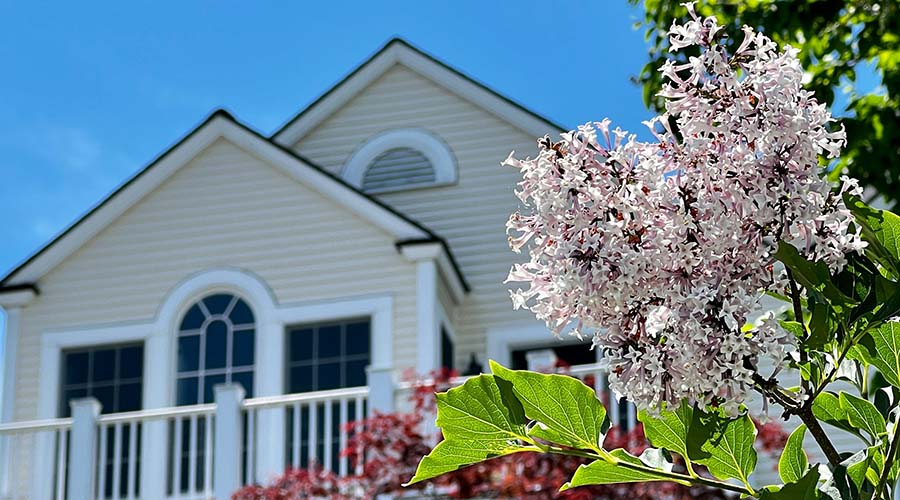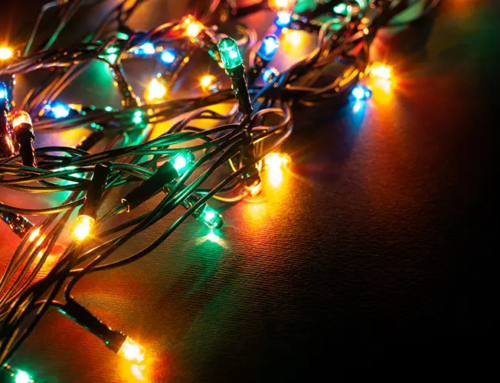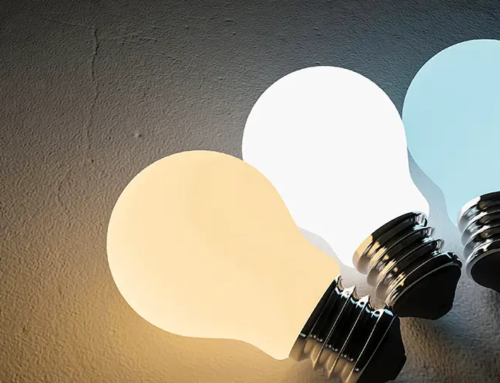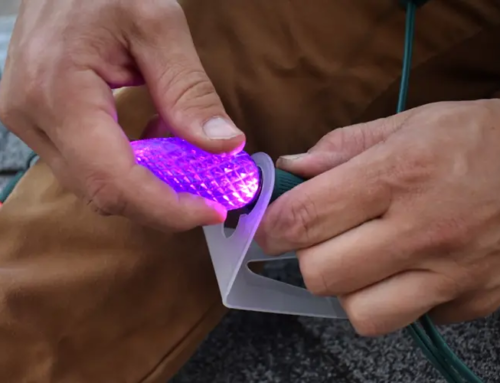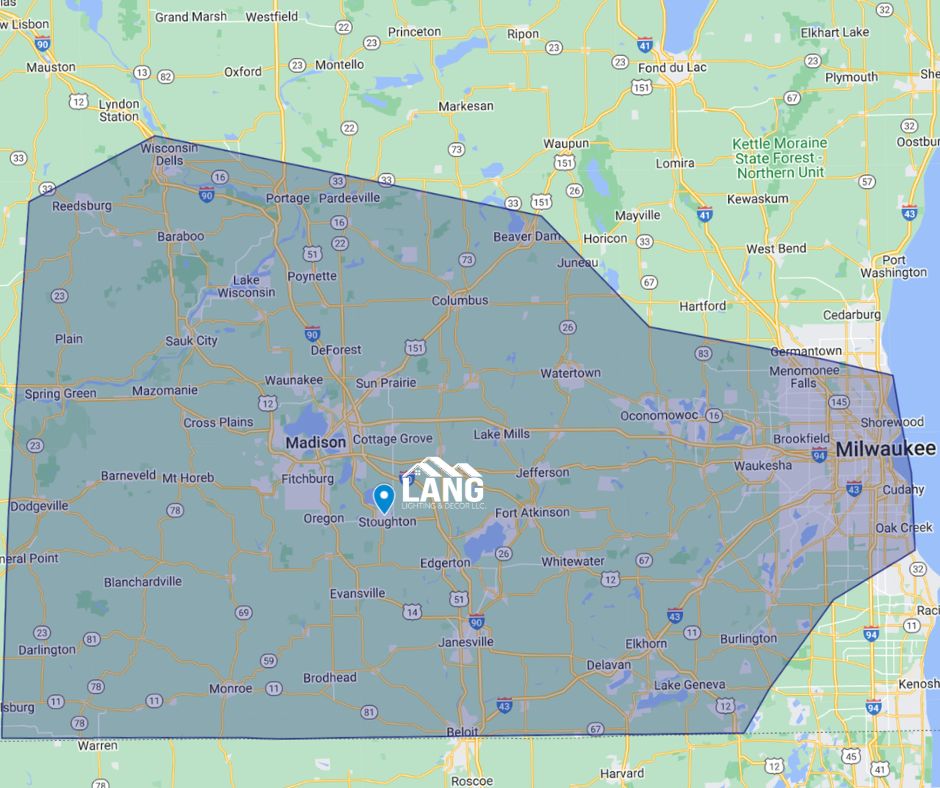Outdoor lighting isn’t just about functionality – it’s a powerful tool for transforming your home’s appearance and creating a welcoming atmosphere. When strategically planned and executed, outdoor lighting can result in creative curb appeal for your home, dramatically turning an ordinary home into a captivating nighttime showcase. It’s an art form that balances aesthetics, safety, and practicality, allowing homeowners to extend the beauty and usefulness of their outdoor spaces well beyond daylight hours.
The right lighting scheme can accentuate your home’s best features, create depth and dimension where there was once only darkness, and evoke a sense of warmth and invitation that draws the eye and welcomes visitors. It can highlight architectural details that might go unnoticed during the day, create a magical play of light and shadow in your landscaping, and even make your property appear larger and more luxurious.
Here are 10 ways strategic outdoor lighting can boost your home’s creative curb appeal, each offering a unique approach to enhancing your property’s nighttime presence and charm. These techniques, when applied thoughtfully, can transform your home’s exterior, creating a stunning visual impact that will impress neighbors, welcome guests, and give you a sense of pride every time you return home after dark.
1. Highlight Architectural Features
Use uplighting to accentuate unique architectural elements like columns, arches, or textured walls. This technique adds depth and drama to your home’s facade, transforming it into a captivating nighttime spectacle. Uplighting involves placing light fixtures at ground level and directing the beams upward, creating a play of light and shadow that can dramatically alter the perception of your home’s exterior.
When applied to columns, uplighting emphasizes their vertical lines, making them appear taller and more imposing. The light washing up the column’s surface highlights its texture and color, creating a striking contrast against the surrounding darkness. This effect can make even simple porch columns look grand and stately.
For arches, uplighting can accentuate their curved shape, drawing the eye along their graceful lines. This technique is particularly effective for doorways or windows with arched tops, adding a touch of elegance and sophistication to your home’s entrance or facade.
Textured walls benefit greatly from uplighting as well. The angled light creates shadows in the wall’s recesses while highlighting its protruding elements, emphasizing the texture and adding visual interest. This can be especially effective on stone or brick walls, bringing out the richness of the material’s natural variations.
The beauty of uplighting lies in its ability to create dramatic effects with minimal visibility of the light source itself. By hiding fixtures in nearby foliage or positioning them discreetly at the base of the wall, you can achieve a magical effect where your home’s features seem to glow from within.
Moreover, uplighting can be adjusted to create different moods. Softer, warm-toned lights can produce a welcoming, intimate atmosphere, while brighter, cooler lights might convey a more modern, dramatic look. You can even use colored lights for special occasions or to complement your home’s color scheme.
When implementing uplighting, consider the balance and symmetry of your home’s facade. You might choose to highlight all similar features uniformly or select specific elements as focal points. The key is to create a harmonious overall effect that enhances your home’s architectural style and personal aesthetic.
2. Create a Welcoming Entrance
Illuminate your front door and porch area with soft, warm lighting. This not only guides visitors but also creates an inviting first impression, setting the tone for the entire home. The entrance to your home is more than just a functional space—it’s the threshold between the public world and your private sanctuary, and lighting it properly can transform it into a welcoming beacon.
When selecting lighting for your front door and porch, opt for fixtures that complement your home’s architectural style. For a traditional home, consider classic lantern-style sconces on either side of the door. For more modern aesthetics, sleek, minimalist fixtures might be more appropriate. Regardless of style, choose warm-toned bulbs (around 2700-3000K color temperature) to create a cozy, inviting atmosphere.
Layer your lighting for maximum effect. Start with ambient lighting to provide overall illumination—this might include a pendant light or flush-mount fixture on the porch ceiling. Then, add accent lighting to highlight specific features. Wall sconces flanking the door can draw attention to this focal point while providing functional light for unlocking the door or greeting guests.
Don’t forget about the importance of the light’s intensity. Overly bright lights can be harsh and unwelcoming, while insufficient lighting can make the entrance feel neglected or unsafe. Dimmable fixtures offer flexibility, allowing you to adjust the brightness for different occasions or times of night.
Consider the placement of your lights carefully. Positioning them at eye level or slightly above prevents glare and creates a more flattering light. If you have steps leading to your porch, integrate subtle stair lighting for both safety and aesthetic appeal.
Highlighting unique features of your entrance can add extra charm. If you have an attractive door with decorative glass or interesting hardware, position the light to showcase these elements. A well-placed spotlight can draw attention to a house number plaque or a beautiful potted plant.
Remember that your front door lighting isn’t just about the immediate porch area. It should create a visual pathway from the street to your door, guiding visitors and creating depth. This might involve subtle path lighting leading to your entrance or landscape lighting that frames the approach.
Seasonal adaptability can make your entrance even more inviting. Consider installing a system that allows you to easily change the color or intensity of your lighting. This way, you can create a warm amber glow in autumn, a festive display for holidays, or a cool, refreshing atmosphere in summer.
Lastly, don’t underestimate the impact of a well-lit front entrance on your home’s security. A brightly lit porch discourages intruders and allows you to clearly see visitors, enhancing both real and perceived safety.
3. Get Creative Curb Appeal with Landscape Lighting
Showcase your garden’s beauty after dark by illuminating trees, shrubs, and flower beds. This extends your home’s visual and creative curb appeal beyond daylight hours, transforming your outdoor space into a magical nighttime landscape. Thoughtful garden lighting can create depth, highlight textures, and reveal a whole new dimension of your landscaping that often goes unappreciated after sunset.
Start by identifying the key features of your garden – majestic trees, sculptural shrubs, or vibrant flower beds. For trees, consider uplighting to accentuate their structure and create dramatic shadows on nearby surfaces. Moonlighting, where lights are placed high in the tree to mimic natural moonlight filtering through branches, can create a soft, ethereal effect.
Shrubs can be highlighted using spotlights or wash lighting, which can emphasize their shape and texture. For more architectural plants like topiary or ornamental grasses, backlighting can create striking silhouettes against walls or fences.
Flower beds benefit from softer, more diffused lighting. Low-voltage LED lights can be tucked among plants to create a gentle glow that showcases colors and textures without overwhelming delicate blooms. Consider using color-changing lights to enhance seasonal displays or complement specific flower hues.
When planning your garden lighting, be mindful of light pollution and energy efficiency. Use fixtures with shields to direct light downward, and opt for warm-toned, low-wattage LED bulbs to create a soothing atmosphere while minimizing environmental impact.
4. Make Your Home Accessible with Path Lighting
Install low-level lights along walkways and driveways. This adds safety, aesthetic, and creative curb appeal, creating a guide to your home’s entrance. This dual-purpose lighting solution not only enhances the visual charm of your property but also serves a crucial functional role in ensuring safe navigation after dark.
Safety is a paramount concern in outdoor lighting design, and pathway lights address this need effectively. By clearly delineating the edges of walkways and driveways, these lights help prevent trips and falls, especially on uneven surfaces or steps. They also highlight potential hazards like changes in elevation or obstacles, allowing both residents and guests to navigate your property confidently after sunset.
The aesthetic benefits of pathway lighting are equally significant. These lights can accentuate the curves and contours of your landscape design, drawing attention to the thoughtful layout of your outdoor space. They can create a rhythm and flow, leading the eye through your garden or along architectural features of your home.
During the day, well-chosen fixtures can serve as decorative elements in their own right, complementing your overall landscaping scheme.
When selecting pathway lights, consider fixtures that complement your home’s architectural style. For a modern home, sleek, minimalist designs in materials like brushed steel or matte black might be appropriate. Traditional homes might benefit from more ornate fixtures in materials like copper or bronze. Solar-powered options are increasingly popular, offering energy efficiency and eliminating the need for complex wiring.
Consider incorporating smart technology into your pathway lighting system. Programmable timers, motion sensors, or integration with home automation systems can enhance convenience and energy efficiency. These features allow your lights to activate precisely when needed, providing illumination for late-night arrivals or early morning departures without wasting energy.
5. Reduce Stress with Water Feature Illumination
If you have a fountain or pond, underwater lights can create a mesmerizing focal point in your yard at night. This enchanting lighting technique transforms ordinary water features into captivating displays, adding depth, movement, and a touch of magic to your outdoor space after dark.
For fountains, underwater lights can accentuate the movement and texture of flowing water. Placed strategically, they can illuminate water jets from below, creating sparkling, dynamic displays that seem to dance and change as the water moves. This effect is particularly dramatic in fountains with multiple tiers or complex water patterns.
In ponds, underwater lighting can reveal a whole new world after sunset. It can highlight the graceful movements of fish, the delicate shapes of aquatic plants, and the textures of rocks or other underwater features. The light reflecting off the water’s surface also creates beautiful, shimmering patterns on nearby structures or vegetation, extending the visual impact beyond the pond itself.
Safety is paramount when installing underwater lights. Always use fixtures specifically designed for underwater use and ensure that all electrical components are properly sealed and grounded. Low-voltage systems are often preferred for their added safety and energy efficiency.
Beyond their aesthetic appeal, underwater lights in ponds can serve practical purposes. They can help deter predators from fish populations and make it easier to monitor the health of your aquatic ecosystem after dark.
For those with smart home systems, many underwater lighting options can be integrated into broader home automation setups. This allows for seamless control alongside other outdoor lighting elements, creating cohesive lighting scenes across your entire landscape.
The impact of underwater lighting extends beyond the water feature itself. It can create a soothing ambiance for outdoor entertaining areas, provide subtle background illumination for garden paths, or serve as a stunning backdrop viewed from inside your home.
6. Accent Lighting for Outdoor Art
Use spotlights to draw attention to outdoor sculptures or wall art, adding an artistic touch to your home’s exterior. This lighting technique transforms your outdoor space into a curated gallery, showcasing your artistic pieces and elevating the overall aesthetic of your property.
Spotlighting, when done correctly, can dramatically enhance the visual impact of sculptures and wall art. By focusing concentrated beams of light on these pieces, you create high-contrast areas that naturally draw the eye, making your art stand out against the darker surroundings. This effect not only highlights the artwork itself but also adds depth and dimension to your entire outdoor space.
When spotlighting sculptures, consider the three-dimensional nature of the pieces. Experiment with light placement to accentuate the sculpture’s form, texture, and details. Multiple spotlights from different angles can create interesting shadows and highlights, revealing aspects of the sculpture that might go unnoticed in flat, ambient light. For abstract pieces, creative lighting can even alter the perception of the artwork, allowing it to take on new forms and meanings as shadows shift.
For wall art, the key is to evenly illuminate the piece without creating glare or hotspots. Adjustable spotlights allow you to fine-tune the angle and spread of light, ensuring that every part of the artwork is properly illuminated. Consider the material of the wall art as well – textured pieces might benefit from angled lighting to accentuate their depth, while flat, glossy pieces might require more diffused illumination to prevent reflective glare.
Consider the integration of your spotlit artwork with the overall landscape lighting design. The illuminated pieces should complement, not compete with, other lighting elements in your yard. Think about sight lines from key viewing areas – both from within your home and from outdoor living spaces – to ensure the spotlit artwork creates pleasing focal points from multiple vantage points.
Smart technology can add an extra dimension to your art lighting. Programmable spotlights can be set to turn on at specific times or in response to motion sensors. Some systems even allow for dynamic lighting scenes, subtly changing the illumination throughout the evening to create evolving views of your artwork.
7. Playful Positioning for Softscape Shadowing
Position lights to cast intriguing shadows of plants or structures on walls or fences, adding depth and interest to your nighttime landscape. This technique, known as shadow play or silhouette lighting, transforms your outdoor space into a canvas of light and dark, creating a dynamic and ever-changing visual display that captivates the eye and imagination.
The art of shadow play involves strategically placing lights to project the silhouettes of carefully chosen elements onto flat surfaces. This could be the delicate tracery of a tree’s branches, the bold outline of architectural features, or the intricate patterns of ornamental grasses and shrubs. The result is a dramatic interplay of light and shadow that adds depth, texture, and mystery to your nighttime garden.
To achieve this effect, start by identifying potential “projection screens” in your landscape – large, flat surfaces like walls, fences, or even the side of your house. Then, consider what elements in front of these surfaces might cast interesting shadows. Trees with distinctive shapes, sculptures with bold outlines, or plants with interesting foliage are all excellent candidates.
The type of light fixture you use can significantly impact the shadow effect. Narrow beam spotlights or well lights work well for creating crisp, defined shadows. For a softer effect, consider using flood lights or lights with diffusing lenses. LED lights are particularly well-suited for this purpose due to their energy efficiency and the ability to easily adjust their intensity and color.
Color can add another dimension to your shadow play. While white light creates classic silhouettes, colored lights can produce stunning effects. Imagine the shadow of a tree cast in a soft blue, evoking a moonlit night, or warm amber light creating the illusion of a sunset silhouette. Some advanced LED systems allow for color-changing options, enabling you to alter the mood of your landscape with the touch of a button.
Movement adds an extra layer of intrigue to shadow play. The gentle sway of ornamental grasses or the fluttering leaves of a tree in the breeze can create mesmerizing, ever-changing patterns of light and shadow. For a more controlled effect, consider incorporating elements like wind spinners or mobiles into your landscape, positioned to cast moving shadows.
Don’t limit yourself to natural elements – architectural features can also create stunning shadows. The geometric patterns of a pergola, the ornate details of wrought iron gates, or the unique shape of garden sculptures can all become subjects for shadow play.
8. Safe and Elegant Deck and Patio Lighting
Extend your living space outdoors with subtle lighting on decks or patios. This creates an inviting ambiance for evening relaxation or entertainment, transforming your outdoor areas into comfortable, functional extensions of your home that can be enjoyed long after the sun sets.
Effective deck and patio lighting blends functionality with atmosphere, providing enough illumination for safety and activities while maintaining a cozy, intimate feel. The key is to create layers of light that can be adjusted to suit different moods and occasions.
Start with ambient lighting to provide overall illumination. Recessed lights installed in the deck itself or under railings can provide a soft, general glow without being obtrusive. For patios, consider string lights hung overhead or along pergolas to create a warm, inviting canopy of light. These options not only illuminate the space but also define its boundaries, creating a sense of an outdoor room.
Task lighting is crucial for areas dedicated to specific activities. For outdoor kitchens or grilling stations, consider adjustable spotlights or under-counter lights to ensure proper illumination for food preparation. Near seating areas, subtle reading lamps or adjustable sconces can provide focused light for reading or intimate conversations without overwhelming the entire space.
Accent lighting adds depth and visual interest to your outdoor living area. Use uplights to highlight architectural features of your home or interesting plants around the perimeter of your deck or patio. Step lights not only provide safety for changes in elevation but also create a subtle guiding path that adds to the overall ambiance.
The color temperature of your lighting plays a significant role in setting the mood. Warm white lights (2700K-3000K) create a cozy, intimate atmosphere reminiscent of candlelight, perfect for relaxed evenings. For a more vibrant entertainment space, consider lights with adjustable color temperatures or even color-changing LED options that allow you to shift the ambiance to suit different occasions.
Consider the materials and colors of your deck or patio when planning your lighting. Light-colored surfaces will reflect more light, potentially requiring less intense illumination, while darker materials may absorb light and need brighter fixtures to achieve the same effect.
For added convenience and energy efficiency, integrate your outdoor lighting with smart home systems. Motion sensors can activate lights as you step onto the deck or patio, while programmable timers can ensure your space is illuminated and ready for use when you typically enjoy it, without wasting energy during off-hours.
Consider the view from inside your home as well. Well-lit outdoor spaces can serve as beautiful nighttime vistas when viewed through windows, effectively extending your interior visually even when you’re indoors.
Lighting can also be used to extend the usability of your outdoor spaces through different seasons. Heat lamps integrated with lighting fixtures can make your deck or patio comfortable even on cooler evenings, while subtle lighting around outdoor fireplaces or fire pits can create cozy gathering spots.
9. Get Creative with Facade Washing
Use broad-beamed lights to gently illuminate the entire front of your home, creating a warm glow that enhances its overall appearance. This technique, often referred to as “facade washing” or “wall washing,” is a powerful way to showcase your home’s architectural features and create a welcoming atmosphere that showcases creative curb appeal from your property to the street.
Facade washing involves using wide-angle lights, typically positioned at the base of the house or mounted on the ground, to cast a broad, even wash of light up the entire face of the building. This creates a soft, uniform illumination that highlights the home’s texture, color, and architectural details without harsh shadows or overly bright spots.
The key to effective facade washing lies in the positioning and selection of lights. Fixtures should be placed at regular intervals along the base of the house, typically about 2-3 feet away from the wall. The distance between fixtures will depend on their power and beam spread, but the goal is to create an overlapping pattern of light that eliminates dark spots and ensures even coverage.
Choose fixtures with a wide beam angle, typically 120 degrees or more, to achieve a broad, uniform spread of light. LED flood lights or well lights are popular choices for this application due to their energy efficiency, long lifespan, and ability to produce a wide, even beam of light.
Pay attention to the texture of your home’s exterior when planning your facade washing. Different materials will interact with light in unique ways. Brick or stone facades with deep texture will create interesting plays of light and shadow, while smooth surfaces may require more careful positioning to avoid glare or hot spots.
Facade washing can be particularly effective in highlighting unique architectural elements. Use it to draw attention to interesting window shapes, decorative trim, or textured surfaces. For homes with varying depths or jutting elements, adjust the positioning and intensity of lights to ensure all areas receive appropriate illumination.
Remember to consider the seasonal changes in landscaping when planning your facade washing. Deciduous trees or shrubs that lose their leaves in winter may allow more light to reach your home’s facade during colder months, potentially requiring adjustments to your lighting scheme.
Integrate your facade washing with other exterior lighting elements for a cohesive look. Ensure that the illumination of your home’s face complements rather than competes with other features like landscape lighting, path lights, or entry lighting.
Smart technology can enhance the functionality of your facade washing system. Programmable timers can ensure your home is beautifully lit during evening hours without wasting energy overnight. Some systems even allow for dynamic lighting scenes, subtly changing the intensity or color of the light throughout the evening for added visual interest.
10. Always Be Ready with Holiday-Ready Lighting
Install permanent, programmable LED lights along rooflines or in trees. These can be adjusted for different holidays or seasons, keeping your home looking festive year-round. This versatile lighting solution offers a myriad of benefits, combining practicality with aesthetic appeal to enhance your home’s exterior throughout the year.
Programmable LED lights represent a significant advancement in outdoor lighting technology. Unlike traditional string lights that are typically installed and removed for specific holidays, these permanent fixtures offer unparalleled flexibility. High-quality LED systems can produce a wide spectrum of colors and can be controlled via smartphone apps or dedicated controllers, allowing you to easily change your home’s lighting scheme with just a few taps.
When installed along rooflines, these lights can accentuate your home’s architectural features, creating a stunning silhouette against the night sky. During the winter holidays, you might program them to display traditional red and green hues or create a twinkling winter wonderland effect with cool whites. For Independence Day, switch to patriotic red, white, and blue. In autumn, warm oranges and yellows can complement the changing foliage.
Energy efficiency is another significant advantage of LED systems. Despite their brightness and versatility, they consume far less power than traditional incandescent bulbs, helping to keep your energy bills in check even with extended use.
Weather resistance is a crucial factor to consider when choosing a permanent outdoor lighting system. High-quality LED fixtures are designed to withstand various weather conditions, from scorching summer heat to winter storms, ensuring your investment lasts for years.
While the initial installation of a programmable LED system may require a higher upfront cost compared to traditional holiday lights, the long-term benefits often outweigh this. The durability, energy efficiency, and versatility of these systems can provide value year after year, eliminating the need for seasonal installations and storage of multiple light sets.
It’s important to note that while these lights offer fantastic decorative possibilities, they should be installed with consideration for your neighbors and local regulations. Many systems allow you to adjust brightness levels and set schedules, helping you create a festive atmosphere without causing light pollution or disturbance.
Remember, the key use effective outdoor lighting for a creative curb appeal is balance. Avoid over-illumination, which can create harsh glare. Instead, aim for a subtle, layered approach that enhances your home’s natural beauty and creates a warm, welcoming atmosphere.
Professional installation ensures your lighting is not only attractive but also safe and energy-efficient. With the right outdoor lighting strategy, you can significantly bring a creative curb appeal to your home and create a stunning nighttime presence in your neighborhood.
If you need assistance with lighting or have questions, feel free to reach out. Let us help you make your home pop with a creative curb appeal element like lighting!

